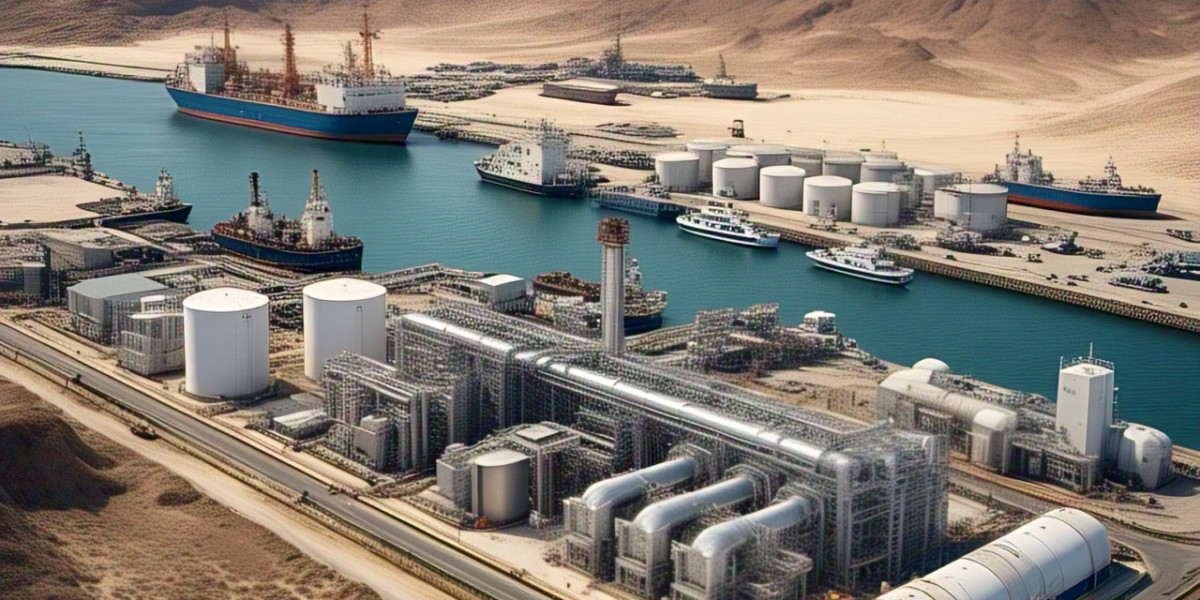Global Desalination Market Size, Share, Growth Trends, and Forecast Report 2025–2033
Market Summary
The global desalination market is projected to grow substantially, reaching US$ 40.28 billion by 2033, up from US$ 17.64 billion in 2024, growing at a CAGR of 9.61% during the forecast period (2025–2033). This growth is propelled by intensifying water scarcity, climate change, industrialization, and increasing reliance on alternative freshwater sources. Technological advancements and strategic government initiatives are playing pivotal roles in the acceleration of this sector.
What is Driving the Global Desalination Market?
1. Growing Water Scarcity Worldwide
Water scarcity is no longer a concern of the future—it is today’s crisis. Nearly two-thirds of the global population face water shortages for at least one month each year. By 2025, half of the world’s population could be living in water-stressed regions. Desalination provides a sustainable and scalable solution to this crisis, transforming seawater, brackish water, and even wastewater into potable water.
2. Technological Innovations Enhancing Efficiency
Modern desalination technologies, especially reverse osmosis (RO) and multi-effect distillation (MED), have become more energy-efficient, cost-effective, and scalable. Recent innovations in membrane materials, digital twins, and energy recovery systems have significantly reduced operational costs and environmental impact. For instance, Hexagon AB's R-evolution launched a global initiative in 2023 using digital twin technologies to improve the scalability of desalination facilities.
3. Government and Institutional Support
Strategic investments and policy support from governments have catalyzed growth. Countries in the Middle East, North Africa, and Asia-Pacific are investing billions in desalination infrastructure. Saudi Arabia launched the Global Water Organization in 2023 and pledged over US$ 6 billion in global water projects. The UAE and China are also expanding rapidly, integrating desalination into national water security strategies.
Key Challenges Facing the Desalination Industry
1. High Energy Consumption and Operational Costs
Despite technological advancements, desalination remains energy-intensive. This limits scalability in developing nations. Although renewable energy integration is growing, traditional desalination still relies heavily on fossil fuels, increasing carbon emissions and cost structures.
2. Environmental Concerns from Brine Disposal
A major ecological issue with desalination is the brine discharge, which contains concentrated salt and chemicals harmful to marine ecosystems. Regulations are tightening globally, and innovations in brine management and reuse are crucial for future market sustainability.
Related Report
· Kenya Desalination Market Size and Share Analysis - Growth Trends and Forecast Report 2025-2033
· Israel Desalination Market Size and Share Analysis - Growth Trends and Forecast Report 2025-2033
· Turkey Desalination Market Size and Share Analysis - Growth Trends and Forecast Report 2025-2033
· Greece Desalination Market Size and Share Analysis - Growth Trends and Forecast Report 2025-2033
Market Segmentation Analysis
By Technology
Reverse Osmosis (RO)
RO dominates the global market due to its high efficiency and cost-effectiveness. Continuous innovations in membranes and energy recovery systems make RO the preferred technology in both municipal and industrial setups.
Multi-Stage Flash (MSF) Distillation
MSF is used in high-capacity desalination plants, particularly in the Middle East, where thermal energy sources are more accessible.
Multi-Effect Distillation (MED)
MED offers better energy efficiency than MSF and is growing in adoption, particularly in regions aiming to minimize environmental impact.
By Application
Municipal
Municipal desalination serves urban populations in water-scarce regions. Large-scale public and PPP (public-private partnership) projects in countries like the UAE, Saudi Arabia, and India are reshaping municipal water supplies.
Industrial
Industries like oil & gas, manufacturing, and energy generation require massive amounts of freshwater. Desalination ensures a reliable supply while reducing dependence on natural freshwater bodies.
By Water Source
Seawater
Seawater desalination holds the largest market share. Coastal nations like Australia, the UAE, and Israel heavily rely on this source, integrating RO and MED systems with renewable energy for long-term viability.
Brackish Water
Desalination of brackish groundwater is gaining attention due to lower salinity and energy needs. It is particularly suited for inland regions like Texas (USA) and North Africa.
River Water
Used in specific regions with polluted or saline rivers. Reverse osmosis and nanofiltration are common technologies applied here, with increasing application in agriculture and municipal sectors.
Regional Market Insights
United States
With growing water scarcity in California, Arizona, and Texas, the U.S. is investing in innovative technologies, including deep-sea desalination. In November 2024, Kubota Corporation invested in OceanWell Co. to develop sustainable desalination solutions.
Germany
Germany leads in industrial desalination and eco-friendly innovation. In October 2023, Boreal Light completed Europe’s largest solar-powered desalination system in Ukraine, showcasing Germany's emphasis on sustainable solutions.
China
China is ramping up desalination efforts to address urban water demand and industrial use. The opening of Veolia’s ion-exchange regeneration plant in 2024 emphasizes China’s commitment to water sustainability and technological self-sufficiency.
UAE
As the global leader in desalination, the UAE integrates solar energy with RO technology to minimize environmental impacts. The Hassyan plant in Dubai, slated to be the second-largest RO facility globally, sets a benchmark for renewable-powered desalination.
Competitive Landscape
Renub Research provides a comprehensive analysis of key players from four critical dimensions: Company Overview, Key Management, Recent Developments, and Financial Insights. Major companies include:
- Acciona
- Dow
- Evoqua Water Technologies
- Siemens AG
- DuPont
- Doosan Enerbility
- Toray Industries, Inc.
- Xylem
Global Desalination Market – Data Overview
Report Attribute | Details |
Base Year | 2024 |
Forecast Years | 2025–2033 |
Market Size (2024) | US$ 17.64 Billion |
Market Size (2033) | US$ 40.28 Billion |
CAGR (2025–2033) | 9.61% |
Segments Covered | Technology, Application, Water Source, Countries |
Delivery Format | PDF, Excel (Editable PPT/Word on request) |
Post-Sale Support | 1 Year (52 Weeks) |
Customization Scope | 20% Free |
Countries Covered
North America
- United States
- Canada
Europe
- France
- Germany
- Italy
- Spain
- United Kingdom
- Belgium
- Netherlands
- Turkey
Asia Pacific
- China
- Japan
- India
- Australia
- South Korea
- Thailand
- Malaysia
- Indonesia
- New Zealand
Latin America
- Brazil
- Mexico
- Argentina
Middle East & Africa
- Saudi Arabia
- UAE
- South Africa
- Qatar
- Kuwait
- Rest of Middle East & Africa
Why Choose Renub Research?
Renub Research offers:
- Deep industry insights and trend tracking
- 20% customization at no extra cost
- Data in PDF, Excel, PPT/Word formats
- Expert analyst support for a full year post-purchase
- Competitive advantage through comprehensive research
Need Customized Insights?
Our customization services include:
- Market size breakdowns by niche segments
- Additional company profiles
- Country-specific reports
- Strategic entry analysis
- Regional dynamics and trade flows
? Call us: USA: +1-478-202-3244 | India: +91-120-421-9822
? Email us: info@renub.com
? Visit: www.renub.com






